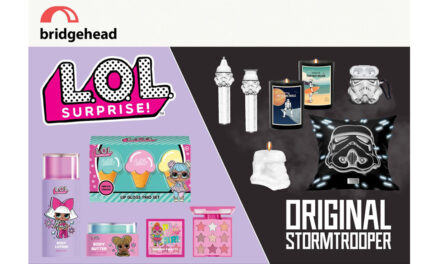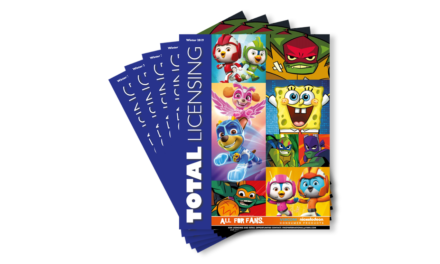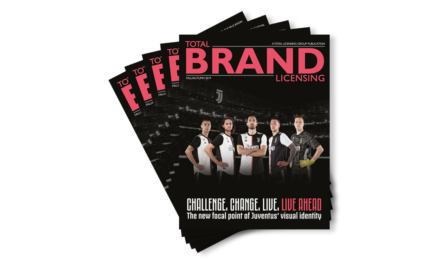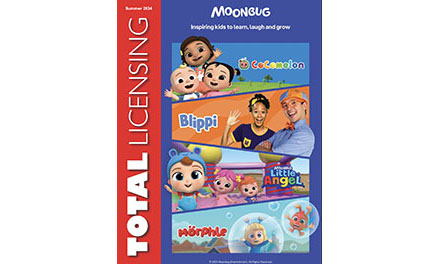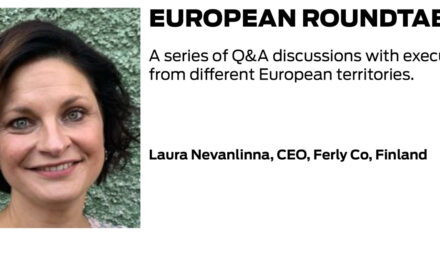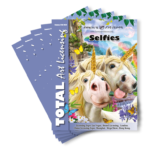
The Korean Licensing Market

By Hyon-Kyong Kim, President, Kvision Inc.
The busiest season for the Korean licensing industry calendar is concentrated in the first six months of the year.
It starts a little earlier with the year-end period in December, followed by the Korean Lunar New Year holiday in January, the new school year in March, the appropriately named “Family Month” in May (when there are a lot of family-orientated public holidays and observances), and finishing just before the summer vacation when there is a surge of licensed product launches. In this context, the twelve animals of the zodiac, that are so popular in oriental culture and symbolize a specific year, become the focus of attention in Korea until about June. Companies and brands actively utilize the zodiac animal characters in their marketing activities, mainly through promotions.
Rabbit Characters Hop Around in 2023, the Year of the Rabbit
In Korea, China, Japan, and other countries where Buddhist culture is widespread, the zodiac sign culture is deeply engrained. The twelve different animals of the zodiac symbolize each year in the twelve-year cycle. This of course is music to the licensing industry where a great licensing opportunity avails itself once in every twelve years if the licensed character is based on one of the zodiac animals!
2023 is the Year of the Rabbit, and various world-famous rabbit characters such as Miffy,
Bugs Bunny, and Peter Rabbit are expected to be the most popular character properties for brand collaborations. In Korea, we have Esther Bunny, a very popular cute pink rabbit character created by Esther Kim, a Korean-American artist (and licensed by my company!), has been enjoying unprecedented success.
Esther Bunny’s activities rolled out for Christmas 2022 in Seoul via a collaboration with COEX, Korea’s leading convention center, and with shopping centre collaborations and pop-up stores at the Times Square shopping mall and Play In The Box at The Hyundai Seoul, a flagship department store of the Hyundai group that opened in 2021.
At the same time in the East Asian region, pop-up stores and promotions were held at Dream Mall, the largest shopping mall in Taiwan, Huahan 1914 Creative Park, and LCX Department Store in Hong Kong. As we moved into 2023, Esther Bunny brand promotions and collaborations expanded into the Korean CU convenience store chain and the Gong cha Taiwanese bubble tea shop franchise. Gong cha is especially worth mentioning as it is right on target for the Esther Bunny fan profile of Korean females in their teens-to-twenties. The tea shop franchise is hugely popular with this demographic and with 800 stores in Korea alone, it has been given us excellent brand promotion.
New Esther Bunny licensed product ranges hitting the market included LocknLock household goods, LOCA Mobility prepaid transportation cards, a fashion line from PLAYBOO, cosmetics from One-day’s You and DUFT & DOFT, and a publishing program from Woongjin.
Convenience Stores are Now the Heart of Character
Merchandise Distribution
Convenience stores in South Korea are truly becoming the major distribution channel for character goods. They are easily accessible to people of all ages, but the main customer segments of Korean convenience stores have aged down from thirty-to-forty-year-olds to twenty-to-thirty-year-olds. Sales data also shows the percentage of elementary school students and other teenage customers has recently shown a rapid increase.
The influx of children into convenience stores is a trend that has emerged since convenience stores began handling toy and stationery ranges. This is because traditional small “mom-and-pop” type stationery stores around school neighborhoods have been closing due to the declining number of students due to the falling birthrate. Another factor was the availability of online classes during the COVID-19 pandemic which reduced stationery store visits by students.
The convenience store industry – led by the three major chains, CU, GS25 and 7-Eleven – is increasing its lineup of various character toys, stationery, food and beverage products, toy candies, key chains, etc., in collaboration with well-known character properties to capture the teenage customer base.
Since GS25 launched its Pokemon Bread Bun in 2022, it also began selling other character products based on Snoopy and Crayon Shinchan. CU launched collaborations with Miffy, Esther Bunny, and Naganonokuma (a bear character from Japan), followed by characters from the Warner Bros. stable such as Tom and Jerry, Tweety Pie, and Bugs Bunny. 7-Eleven made sure it didn’t miss out by using Sanrio characters such as Hello Kitty, My Melody, Cinnamoroll and Kuromi, while emart24, another chain, launched character products using Pinkfong’s Baby Shark and its own in-house character called One One. In addition, each season, there is strong activity with characters being used in a steady stream of promotions and collaborations in various fields such as webtoons and games. Thus, in addition to actively targeting the twenties and thirties consumer, character marketing to teens has been expanding recently. Character properties targeted for collaboration have also expanded into various fields such as webtoons and games, creating interesting examples.
Social Media and Emoticons: Now a Must for Character
Licensing
Recently, “social media”, “emoticons”, and “silly cuteness” are the common keyword denominators for licensed characters that are gaining popularity among the Korean teens-to thirties-age group. Typical Korean character properties cited include Gosimperson, Broken Bear, and Shaky Animals. All these animal-based characters were created by solo artists and what they have in common that they actively use social media such as Twitter, Instagram, and KakaoTalk’s Emoticon service for branding. They upload content such as illustrations, toons, product launches, promotion schedules, etc., and the social media platforms serve as windows for building characters’ worldviews and communicating with fans.
Emoticons also serve as both content and revenue-generating digital goods. The most used messenger application in Korea is KakaoTalk and its emoticons store has many designs uploaded to the site, with various characters’ personalities on show. The emoticons that are gaining popularity in Korea these days are characters that express a “silly cuteness” sensibility. The artwork is characterized by a warm message contained in seemingly casual phrases that seem to be drawn in broad strokes. Licensors of characters that appeal to this trivial cuteness are expanding their scope of activities into the licensing arena as their fandom grows. Mainly, products targeting women in their teens to thirties, such as plush toys, stationery, household goods, F&B, and smartphone accessories, are being released. Companies and brands are also actively engaged in collaborative promotions and pop-up stores.
In addition, characters owned by companies such as Choonsik, a pet cat belonging to popular Kakao Friends character Ryan, and Zanmang Loopy, a beaver girl from the popular Korean children’s cartoon Pom Pom Pororo produced by Iconix, are also gaining popularity in emoticons and licensing.
Recently, Korean licensors have shifted their focus from characters for younger kids to ones targeting teens and above. The most active target group for licensing in Korea remains toddlers and kids, but due to the declining population of these younger age groups due to the shrinking birth rate, new sales channels must be sought.
However, the older the age group, the fewer the product items to which the characters can be applied, and this is a deep concern. At the same time, however, positive signs are being felt that demand for character products is increasing. Currently, licensing companies are tapping into the older age group by frequently conducting one-off promotions through collaborations. Due to short promotion periods, it is difficult to set guarantees and generate steady royalty streams. As a result, it is not easy to build long-term, stable royalty revenue or guarantees that have been one of the key features of licensing. This is an issue that the Korean licensing industry needs to grapple with moving forward.
Hyon-Kyong Kim is president of Korean licensing agency, K-VISION Inc.
Ms. Kim studied for a Masters Degree in Journalism at Sophia University in Tokyo for two years. During that time, she also worked as an overseas video journalist for KBS 2 TV channel, part of Korean Broadcasting System, the national South Korean public broadcaster. Upon graduation, after working for Sumitomo Warehouse, she re-engaged with media joining H.C.P., Japan’s first magazine dedicated to the “Korean Wave” of popular Korean contents. Thereafter she worked for the Tokyo International Anime Fair Secretariat before establishing K-VISION in Japan in 2005 and then in Korea in 2010. Ms. Kim writes extensively on the Korean contents industry. For three years, she authored a Korea market column for CharaBiz.com, a Japanese character industry portal site, and now continues to contribute to Korean licensing magazines.
Website: www.k-vision.com
Email: master@k-vision.com

